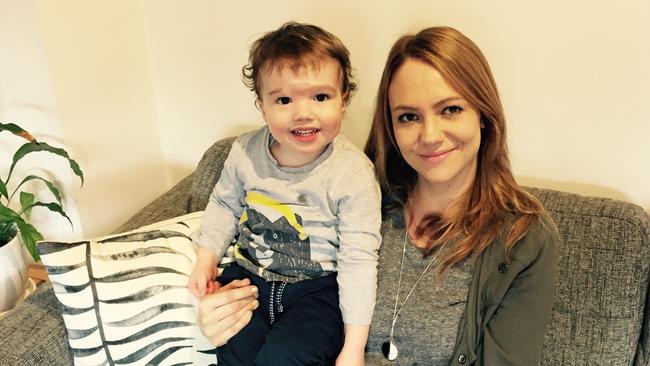More than half of households have no cash left over at the end of the month, ME Bank survey finds
EMMA Fisher is one of millions of struggling Aussies forced to make tough decisions, as power prices skyrocket and wages stagnate.

EMMA Fisher never had to shop at Aldi before.
But skyrocketing electricity and gas prices, stagnating wages and increasing grocery bills mean the Melbourne mum has had to find savings wherever she can.
“I never used to shop at Aldi, but I have been this year,” the 33-year-old said.
Utilities, she said, take up by far the biggest chunk of cash.
“We recently got a gas bill of $300 for a six-week period. I’ve noticed an increase in household bills, particularly this year, gas and electricity have gone up a lot. It’s definitely a lot more difficult than in previous years. Even the grocery bill is higher.”
Ms Fisher, who currently rents in Eltham with her husband and two-year-old son, is one of millions of Aussies struggling with rising cost of living and low wage growth, according to ME Bank’s latest Household Financial Comfort Report.
The twice-yearly study, based on a survey of 1500 people, found that just over half (51 per cent) of Australians now have no spare cash at the end of the month, with rising costs of energy, fuel and groceries the biggest source of pain for 44 per cent of respondents.
“We’re saving so we can buy a house next year, and after putting aside what we need to save to be able to do that, there’s really nothing left over,” she said. “It means we’ve got less disposable income to do fun things.”
That means cutting back on restaurant meals, trips to the movies and family holidays. “Last year we went to Fiji, other years we would go somewhere in Queensland, but we won’t be able to have one this year,” she said.
“We’re just trying to be careful with grocery spend, making sure we make our lunches and meals in bulk, going to market to buy fruit and veg. With utilities we’re trying to make sure we turn things off. We haven’t been turning the heating on, just using a heater in the room we’re in.”
Ms Fisher works part-time as a psychologist in community mental health and has increased her hours this year to make ends meet. “I’m probably working more than I would want to, this year in particular I’ve increased my days per week,” she said. “It’s more than I would want to have my child in childcare, [but] it does work out better for us.
“I have family and friends who have chosen not to work because [the childcare costs] didn’t work out for them. For me it does, but it is really expensive. I’ve got lots of friends with young kids who are finding it difficult. Everyone is definitely feeling the pressure.”
According to ME Bank’s survey, nearly 70 per cent of households either have stagnating or falling income, adding to pessimism for the future. “While retail inflation is low, in general, hikes in the cost of necessities such as fuel, household gas and electricity are the biggest worry for over 40 per cent of households,” said ME Consulting economist Jeff Oughton.
Mortgage and rental stress was also named as a big issue, with nearly 40 per cent of households currently paying off a mortgage or renting worried about their ability to keep making payments. Forty per cent of these households are paying 30 per cent or more of their pre-tax income on mortgage or rent, a commonly accepted indicator of stress.
“Speculation the RBA will lift the cash rate is causing households’ concern as it will impact monthly cash flows, ability to pay off debts, save and spend,” Mr Oughton said. “Gen Xers, single parents, and to a lesser degree, couples with young children, expressed the most concern about potential rate rises.
“This will continue to be an important factor in household financial comfort, especially since the RBA has marked 3.5 per cent as the new norm for the neutral cash rate — well above the current actual cash rate [of 1.5 per cent].”
While the overall “financial comfort index” rose 2 per cent to 5.51 out of 10 in the six months to June 2017, a growing number of households expect their position to worsen, with future expectations falling for the third consecutive survey.
“On the surface the financial comfort of the average Australian looks good, but it’s fragile — susceptible to housing stress and energy cost shocks,” Mr Oughton said.
“Overall financial comfort rose most notably due to 3 per cent rises in comfort with savings, income, and investments, reflecting some improvements in the labour market, rising house values and investments.”
He added that households had already been hit with energy bill shock in the first half of 2017, and were anticipating more to come given the much-publicised energy price hikes, in some cases of up to 20 per cent, which came into effect from July 1.
Last week, Coles boss John Durkan said rising living costs were forcing families to switch out healthy options for cheaper packaged goods in what he described as a “disastrous” trend.




